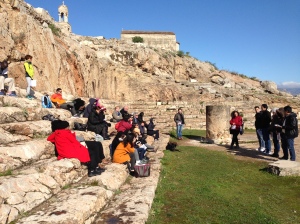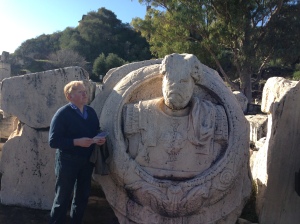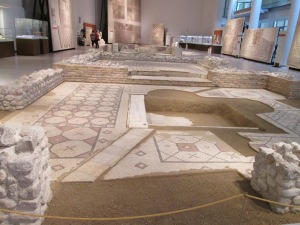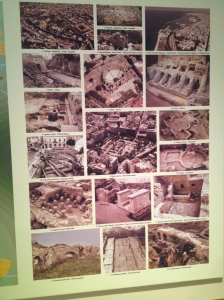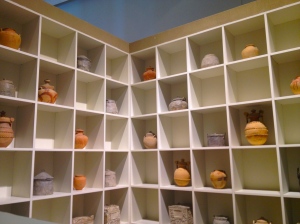: Heritage
Discovering the Archaeologists of Africa Launches
You are invited to participate in the Discovering the Archaeologists of Africa project.
This project aims to bring a general perspective on who works in African archaeology and the ways that archaeology is done in African countries.
In this first stage of the project, we are asking people to complete a short survey that asks questions about employment in archaeology and academic provision. It will take approximately five to ten minutes to complete the questionnaire.
Your participation in this study is completely voluntary. There are no foreseeable risks associated with this project. However, if you feel uncomfortable answering any questions, you can withdraw from the survey at any point.
It is very important for us to learn your opinions. Your survey responses will be strictly confidential and data from this research will be reported only in the aggregate. Your information will be coded and will remain confidential. If you have questions at any time about the survey or the procedures, you may contact Kenneth Aitchison by email at [email protected].
We would appreciate as many people as possible contributing as possible – so please send this link – https://discoafrica.questionpro.com/ – to any colleagues who you think could help.
Start the survey
Training the future of Business in Heritage Management
Tactile Art and Bridging the Gap Between Cultural Heritage and Disability
A super energetic girls’ group from CBWDS (Centre for Blind Women and Disability Studies),New Delhi, shared their experiences with Siddhant Shah, after the tactile walk ‘Abhas’ at DAG Modern (a Modern Art museum in Delhi). Gudiya – as she is popularly called by her teachers, thanked Siddhant Shah and the team from DAG Modern who assisted them during the walk. She shared with the team how she and her friends were amazed to ‘touch and see’ the artwork. It was a first time experience for them to be invited to an art gallery and the opportunity to actually feel the objects, which was something that none of the other galleries offer. They are not equipped with the infrastructure that can make their space accessible to those with visual impairment. When the girls were asked about their favorite art work, there was a unanimous vote for the 3D tactile reproduction of the artwork by Eric Bowen. As they had fun touching the replica and exploring various shapes, lines and surfaces of this black and white strip artwork.

Siddhant Shah and students exploring the 3D Tactile Reproduction of Eric Bowen’s artwork
Photo Courtesy: DAG Modern
Their second favorite is the reproduction of J. Swaminathan’s, Bird, Mountain and Tree series, where they not only enjoyed touching and experiencing the artwork but also appreciated the element of smell in this reproduction. Ishrat Jahan, who hails from Banaras, is the youngest member of this group who receives and undertakes training in areas of crafts, candle making, braille reading and other skills. She made a remarkably interesting observation with reference to burnt wood Tactile Aid for Jeram Patel’s Art work, commenting on how amazed she was to learn that creating something did not always involve sticking things together – but one could also burn to create something new.
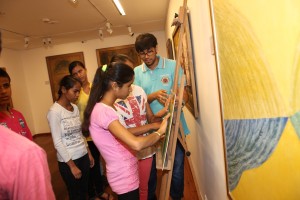
Students exploring the 3D Tactile Reproduction of J. Swaminathan’s artwork
Photo Courtesy: DAG Modern
Siddhant Shah, who is the creator of ‘Abhas, a Tactile Experience’, feels that his work is successful when he hears comments like these. It fits the main aim of this initiative – allowing one to experience art with multiple senses and being aware of the ideas and concepts that exist in the art-scape. The students of CBWDS concluded the discussion with a round of chai or Indian tea, essentially with milk and sugar, while Gudiya made a parting statement, saying that sensing the various materials through touch, had helped her think about other unique ways of using paper, strings and sand for her handicraft training sessions.

Siddhant Shah, a Stavros Niarchos Scholar finished his MA in Heritage Management from the University of Kent (Athens Campus, Greece). His first degree is in Architecture with a Pg. Dip. Indian Aesthetics, and is an Access Management Consultant who specializes in bridging the gap between Cultural Heritage and Disability. He works with museums, art-events, art galleries and cultural sites to make them more accessible through educational and multi-sensory experiential activities, focusing on kids and groups with special needs. He has designed books in Braille for cultural organizations in India and Pakistan along with Tactile Art & Heritage Walks. He has written and designed India and Pakistan’s 1st Open Braille guide book with large script font and tactile plates. Shah consults national and international museums like National Museum, Jaipur City Palace Museum, State Bank of Pakistan Museum and other organizations like DAG Modern, Art1, India Art Fair amongst others. His is driven with a focus to either ‘Get a Person to the context or get the Context to the person’.
National Gallery Strike Reveals Importance of HR Management
After 111 days of strike the more than 200 strikers of the National Gallery of London under the aegis of the Public and Commercial Services (PCS) Union declared (partial) victory last October. The strike started as plans of the outgoing director – upheld by the trustees of UK’s National Gallery – decided to outsource the jobs of the ‘front-line’ staff, i.e. people in tickets, Gallery rooms, shops and so on, to a security company.
The plans were based on the premise that the security company could pay its staff much less than the Gallery in order to not only do things cheaper but also make a profit. Despite the declared industrial motion victory, the plans for outsourcing will go ahead. (more…)
Archaeological Museum of Patras

The Archaeological Museum of Patras new modern architecture and reflective pool. Photo Credit: Ministry of Culture
Recently, I took a spontaneous day trip to Patras and came across the city’s new archaeological museum. The Archaeological Museum of Patras is housed in a sleek, marvelous, contemporary building specifically designed to accommodate large crowds of museum visitors without compromising its collections.
The museum is comprised of three large halls for the divided themes of the permanent exhibition- Private Life, Public Life and the Cemeteries. The exhibition covers the history of Patras as well as southern and western areas of Achaea from the period of 3000 B.C. to 4th c. A.D. Artifacts belonging to the Mycenaean and Roman periods are the most distinguished in the collection.
The Private Life hall houses artifacts pertaining to everyday life such as work tools, household decorations and toiletries. Highlights of the Private Life hall include the reconstructions of a private bath, a rural and an urban house, and the large mosaic floors.
The Public Life hall focuses on administrative and social organization, commercial activities, cults, Patras’ topography, and entertainment.
The Cemeteries hall displays the finds in a manner that emphasizes the wealth and assortment of grave offerings, mortuary procedures as well as funerary architecture. Grave offerings were displayed in a mock in situ way to show how they were laid amongst the bodies. The dead were also displayed in this same manner giving a sense that we as the visitors are in fact opening the crypts for the first time
Overall the permanent exhibition was expertly laid out; each hall guided the visitor through the exhibition chronologically and typologically. There are numerous large panels with plenty of interesting information regarding the artifacts made easy to understand for non-experts. Extensive information is provided in both Greek and in English. The museum is equipped with a small but friendly staff. The museum closes at 3pm, so plan according to allow plenty of time to enjoy all of the ancient artifacts. Patras tends to be overlooked by people passing to and from the ferry station, but the archaeological museum is a hidden gem and well worth the visit.
Sabrina Nieblas is currently a student of the innovative MA in Heritage Management 2013. During her undergraduate career, she studied museum practices and public relations. Sabrina seeks to utilize her skill set in the expanding field of sustainable tourism, specifically in the region of Mesoamerica.
Traditional Tattoos: Impressive Intangible Heritage of Croats in Bosnia and Herzegovina
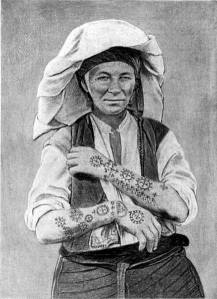
Tattooed wife from Lašvanske Valley, Bosnia. Photo Credit: Traditional Croatian Tattoos
My interest in this topic started as a quite personal thing. As a tribute to my grandmother who passed away two years ago. I remember that I was impressed that my grandmother had a tattoo, and more over, that she gotten it when she was a young girl, about 9 years old. The story goes like this…
The Greek historian Strabo (1st century BC) mentions tattooing as a custom of inhabitants of the area corresponding to present day Bosnia and Herzegovina. He said, “they are poor, and they have tattoos as other Illyrian tribes.”
However, this phenomenon became widespread among the Roman Catholic population of Bosnia and Herzegovina during the Ottoman rule of their lands (1463 – 1878), and lasted up until 20th century, more precisely until 1938. With the creation of communist Yugoslavia, which part Bosnia and Herzegovina became after World War II, this practice of tattooing was not as desirable and it faced a sharp decline. The last recorded example of a person who had the traditional tattoo done with a traditional method is from the 1984.
Bosnian Catholics would tattoo their children hoping that it would save them from Ottoman’s practice of taking young boys and sending them to Istanbul to become soldiers and convert them to Islam. This was done so even if that happened, their children would have a permanent reminder of who they were and where they came from. The practice was even more common among young girls. Their parents hoped that tattoos of a cross or other Christian symbols would prevent Turkish men from taking them as their wives.

Rose Zadrić, born in 1937 in Rama village Dobroš, Sicana. Photo Credit: Traditional Croatian Tattoos
Bosnian Catholic Croats used to tattoo their hands, chest, wrists or even forehead with the Christian symbols (like small cross), but also many other motifs are present. There were special days during the year when tattooing would take place (usually the time before Easter). They used natural materials to prepare a mixture, such as honey, carbon, and mother’s milk.
Even today in Bosnia and Herzegovina you can find a lot of women who have these tattoos, but they were all born around the 1930s and they are the last living generation to wear this impressive evidence of the fight that their ancestors undertook to protect their faith and origins. However, some great work on this subject has been done, like the book from the prominent archaeologist and historian Ćiro Truhelka, who did research on this subject in late 19th century. There were also some workshops for tattoo artists and also a work of young researcher Tea Turalija, who is trying to document as much as possible cases of women who are still alive, to record their stories and to take photos of their tattoos. You can follow her work on
https://www.facebook.com/pages/Traditional-CroatiaTattoo/222413247770680?ref=profile
In the end, the goal for us who see this tradition as something unique and beautiful, is to bring it to the UNESCO list of Intangible Heritage. Hope you will find it fascinating as I do.

Close-up of Rose Zadrić’s tattoos from 1947, when she was 10 years old. Photo Credit: Traditional Croatian Tattoos

Photo Credit: Traditional Croatian Tattoos

Marija Kamber finished the MA in Heritage Management in 2013 and also has a Masters in Tourism Management. With 5 years experience in marketing, she tries to combine the knowledge of those Masters into her projects. Marija plans to start work on a PhD in September in the area of cultural heritage and human rights. Her interests involve painful heritage, dark tourism, the role of heritage in conflicts and multiethnic societies, as well as the connection between heritage and human rights.

